Related Research Articles

Joseph Vernon "Big Joe" Turner Jr. was an American blues shouter from Kansas City, Missouri. According to songwriter Doc Pomus, "Rock and roll would have never happened without him." His greatest fame was due to his rock-and-roll recordings in the 1950s, particularly "Shake, Rattle and Roll", but his career as a performer endured from the 1920s into the 1980s.

Hadda Brooks was an American pianist, vocalist and composer. Her first single, "Swingin' the Boogie", which she composed, was issued in 1945. She was billed as "Queen of the Boogie". She sang at Hawaii's statehood ceremony in 1959 and was asked for a private audience by Pope Pius XII.
Boogie-woogie is a genre of blues music that became popular during the late 1920s, developed in African-American communities in the 1870s. It was eventually extended from piano, to piano duo and trio, guitar, big band, country and western music, and gospel. While standard blues traditionally expresses a variety of emotions, boogie-woogie is mainly associated with dancing and Boogie-woogie dance. The genre had a significant influence on rhythm and blues and rock and roll.
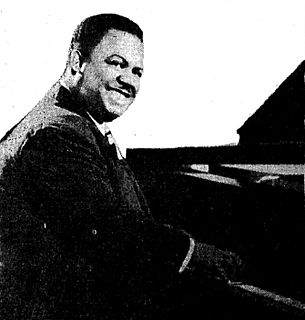
Anderson Meade Lewis, known as Meade Lux Lewis, was an American pianist and composer, remembered for his playing in the boogie-woogie style. His best-known work, "Honky Tonk Train Blues", has been recorded by many artists.
Soundies are three-minute American musical films, produced between 1940 and 1947, each displaying a song, dance, and/or band or orchestral number. Produced professionally on 35 mm black-and-white film, like theatrical motion pictures, they were printed on the more portable and economical 16 mm film.

Lena Mary Calhoun Horne was an American dancer, actress, singer, and civil rights activist. Horne's career spanned over seventy years, appearing in film, television, and theatre. Horne joined the chorus of the Cotton Club at the age of sixteen and became a nightclub performer before moving to Hollywood.

Harry "The Hipster" Gibson, born Harry Raab, was an American jazz pianist, singer, and songwriter. He played New York style stride piano and boogie woogie while singing in a wild, unrestrained style. His music career began in the late 1920s, when, under his real name, he played stride piano in Dixieland jazz bands in Harlem. He continued to perform there throughout the 1930s, adding the barrelhouse boogie of the time to his repertoire.
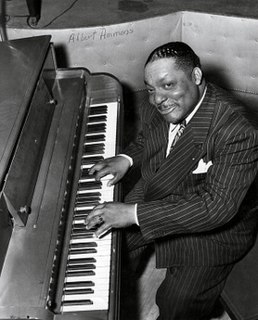
Albert Clifton Ammons was an American pianist and player of boogie-woogie, a blues style popular from the late 1930s to the mid-1940s.
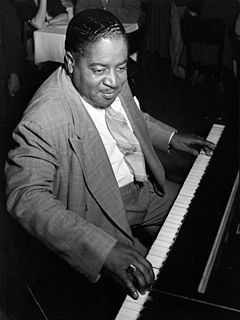
Pete Johnson was an American boogie-woogie and jazz pianist.
Clarence Smith, better known as Pinetop Smith or Pine Top Smith, was an American boogie-woogie style blues pianist. His hit tune "Pine Top's Boogie Woogie" featured rhythmic "breaks" that were an essential ingredient of ragtime music, but also a fundamental foreshadowing of rock & roll. The song was also the first known use of the term "boogie woogie" on a record, and cemented that term as the moniker for the genre.
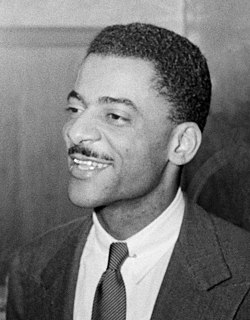
Theodore Shaw Wilson was an American jazz pianist. Described by critic Scott Yanow as "the definitive swing pianist", Wilson had a sophisticated, elegant style. His work was featured on the records of many of the biggest names in jazz, including Louis Armstrong, Lena Horne, Benny Goodman, Billie Holiday, and Ella Fitzgerald. With Goodman, he was one of the first black musicians to appear prominently with white musicians. In addition to his extensive work as a sideman, Wilson also led his own groups and recording sessions from the late 1920s to the 1980s.

Jona Lewie is an English singer-songwriter and multi-instrumentalist, best known for his 1980 UK hits "You'll Always Find Me in the Kitchen at Parties" and "Stop the Cavalry".

"Boogie Woogie Bugle Boy" is a World War II jump blues song written by Don Raye and Hughie Prince which was introduced by The Andrews Sisters in the Abbott and Costello comedy film, Buck Privates (1941). The Andrews Sisters' Decca recording reached number six on the U.S. pop singles chart in the spring of 1941 when the film was in release. The song is ranked No. 6 on Songs of the Century. Bette Midler's 1972 recording of the song also reached the top ten on the U.S. Billboard Hot 100.
From Spirituals to Swing was the title of two concerts presented by John Hammond in Carnegie Hall on 23 December 1938 and 24 December 1939. The concerts included performances by Count Basie, Benny Goodman, Big Joe Turner and Pete Johnson, Helen Humes, Meade Lux Lewis, Albert Ammons, Mitchell's Christian Singers, the Golden Gate Quartet, James P. Johnson, Big Bill Broonzy and Sonny Terry.

That's Black Entertainment is a 1989 documentary film starring African-American performers and featuring clips from black films from 1929–1957.
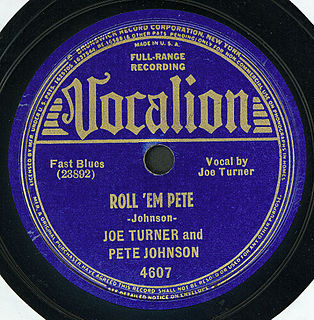
"Roll 'Em Pete" is a blues song, originally recorded in December 1938 by Big Joe Turner and pianist Pete Johnson. The recording is regarded as one of the most important precursors of what later became known as rock and roll.
Eddie Dougherty was an American jazz drummer.
Joseph L. "Big Joe" Duskin was an American blues and boogie-woogie pianist. He is best known for his debut album, Cincinnati Stomp (1978), and the tracks "Well, Well Baby" and "I Met a Girl Named Martha".
Barney Josephson (1902–1988) was the founder of Café Society in Greenwich Village, New York's first integrated nightclub. Opening artists in 1938 included Billie Holiday, who first performed the song "Strange Fruit" there.
References
- ↑ "Boogie-Woogie Dream (1944)". IMDb.com. Retrieved 2014-05-22.
- ↑ Scott Yanow, "Jazz on Film," Backbeat Books, San Francisco, 2004, p. 23
- 1 2 "A Few Historical Remarks on Boogie-Woogie Dream by Konrad Nowakowski". Colindavey.com. Retrieved 2014-05-22.
- ↑ "Boogie-Woogie Dream: A Synopsis by Colin Davey". Colindavey.com. Retrieved 2014-05-22.
- ↑ Archived October 28, 2007, at the Wayback Machine
- ↑ Burger, Hanuš: Der Frühling war es wert. Erinnerungen. München: Bertelsmann, 1977
- ↑ Scott Yanow, ' ' Jazz on Film ' ' Backbeat Books, San Francisco, 2004, p.28